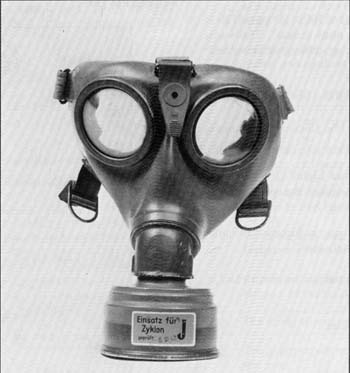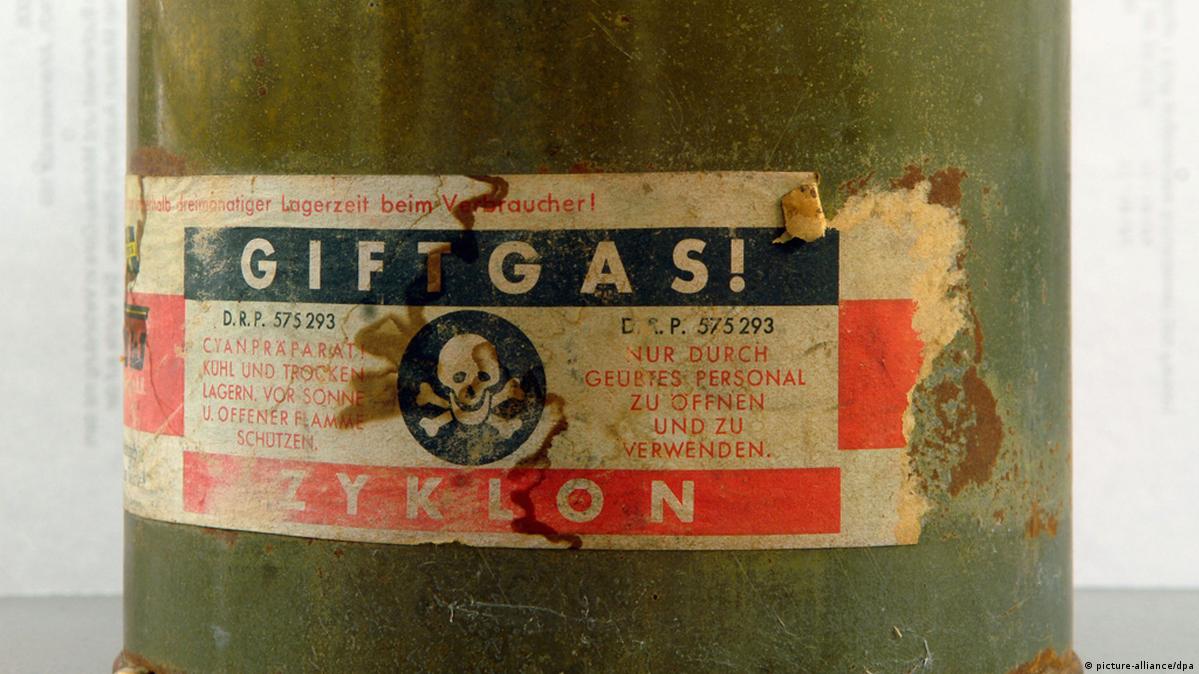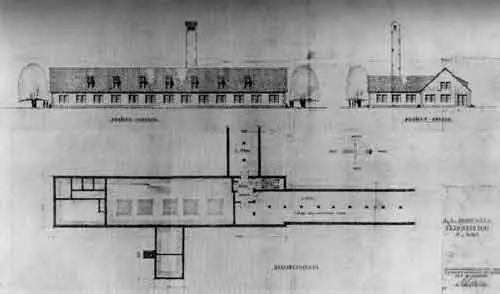Vincent Reynouard on Why The Germans Dynamited The Crematoria at Auschwitz
Can a Nazi make a square hole in a concrete roof? In this fascinating video, fearless French revisionist Vincent Reynouard shows us what a real hole looks like in a roof at Auschwitz, then demonstrates that the famous "Zyklon B introduction holes" of the Birkenau "gas chambers" are indeed nowhere to be found. No holes, no Holocaust. An excellent introduction to the history of—and the reality behind—the Soviet propaganda lie that is the story of the Auschwitz gas chambers. * Note: Reynouard mistakenly says "Morgue 2" ("morgue deux") for "Morgue 1" in a number of places in the video. However, the images of the collapsed "gas chamber" roof here are indeed all from Morgue 1, the "correct" building according to orthodox Holocaust history. As for "Morgue 2," it is the half-basement extension (in-line) of the crematorium building proper, allegedly used as an "undressing room" for gassing victims. Both rooms, naturally, were just what their names implied: morgues for keeping bodies cool prior to cremation in the crematory building above them, their size being dictated by the emergency conditions of epidemic typhus which led to construction of the crematoria in the first place.
(Subtitles on.)
I am often asked this question:
If the crematoria of Birkenau really were no more than simple crematories with their attached morgues
why did the Germans dynamite them before evacuating Auschwitz?
Good question.
To understand this question, it's necessary to go back six months earlier to July 1944.
On 17 July of that year, the Germans had evacuated their camp at Majdanek, near Lublin.
They left it for the most part intact, including its crematory ovens.
A week later, the Red Army entered the camp, capturing a number of Germans who were still there.
The Soviets quickly understood all the advantages they could extract from the situation.
They immediately labelled Majdanek an "extermination camp" and brought the local populace to show them the crematory ovens in particular.
This internal propaganda also served to galvanize Soviet troops and incite them to exact all sorts of "revenge."
On this sign which the Soviet authorities erected to address their soldiers
and which was discovered by the Germans during a counteroffensive
one could read: "Soldiers! Majdanek does not forgive. Avenge yourselves without mercy!"
Moreover, during these counteroffensives, the Germans found the bodies of numerous civilians who had been massacred
including those of completely innocent children.
THEY paid for Majdanek.
At the end of August 1944, the propaganda went international.
The kickoff came with the publication of a long report from a "Polish-Soviet Extraordinary Commission" which had investigated at Majdanek.
The authors affirmed that "That which was found by the Commission . . . leaves far behind, in its brutality and barbarity,
the monstrous crimes committed by the German-Fascist invaders already known to world public opinion."
In particular, this was a question of four crematory ovens which were capable of burning four bodies at a time in fifteen minutes
and which were in operation twenty-four hours a day
which would have made it possible to burn 1,920 bodies daily.
In short, a veritable inferno worthy of Dante.
The commission concluded that 1,380,000 people had been exterminated at Majdanek.
In November 1944, a memorial museum was established on the site in order to perpetuate the memory of this Nazi barbarity.
From 27 November to 2 December 1944, an expedited trial was held of the six Germans captured during the liberation of the camp.
All were condemned to death, except for the one who committed suicide in his cell,
and were publicly hanged the next day following the rejection of their pleas for mercy.
Film images of their execution were presented in cinemas all over, as for example here in the U.S.A.
There then appeared, in numerous languages, including French, a pamphlet by Konstantin Simonov about the camp.
In it, the Germans were depicted as pure sadists who spent their time torturing and killing.
Anything would do for them,
even an insignificant clothes press.
The S.S. monsters, Simonov assures us, would amuse themselves by crushing the arms of a prisoner between the two rollers
"up to the elbow or shoulder" as the case may be:
"The cries of the victim were the principal amusement of the S.S."
Naturally, all this was attested to by "irreproachable witnesses."
In the first edition of his brochure,
Konstantin Simonov revealed to the French public that at Majdanek [Jewish ex-Prime Minister of France] Leon Blum had died.
Wanting to share in the fate of his people, he had allowed himself to be deported and had wound up in this camp
where, without consideration of his age or his personal eminence,
the S.S. had used him to transport heavy materials.
This fact, the author assures us, had been "confirmed in all its details by two witnesses."
The only problem was that a few weeks after the publication of Simonov's pamphlet
Leon Blum returned, quite alive, from his deportation,
a deportation during which, happily for him, he had enjoyed favorable special treatment and had even been able to get married.
He had never been sent any further than the edges of the camp at Buchenwald [i.e., in Germany].
A second version of Konstantin Simonov's pamphlet was then published
with a new cover, and above all — a new page 7
from which the passage concerning the supposed death of Leon Blum at Majdanek had been discreetly removed.
The infernal clothes wringer, Leon Blum killed in the camp, etc., etc. . . .
Konstantin Simonov's pamphlet was consistent with the usual Soviet propaganda
— which is to say, shamelessly mendacious.
Today, at any rate, the air has gone out of the balloon:
the website of the Majdanek museum speaks of 80,000 people killed, which puts us a long, long way from the 1.38 million of the Soviet propaganda.
As for the site of the U.S. Holocaust Memorial Museum,
it declares, "Within the framework of Operation Reinhard, Majdanek primarily served to concentrate Jews whom the Germans spared temporarily for forced labor."
Extermination actions thus would have been no more than secondary.
Wait a few more years and the truth about this camp will be entirely revealed.
For now, let me just remind you that, right to the bitter end, the last commandant of Majdanek insisted that he had never seen any gas chambers in the camp.
In any case, in 1944-45 Konstantin Simonov reprised and made official the rumor of the gas chambers.
He also showed the notorious crematory ovens.
The back of his pamphlet perfectly encapsulates the mechanism of this malicious propaganda.
We see some victims
the executioners
and right at the very top, the crematory ovens,
those infamous ovens that would become the symbol of the "death camp."
One thus understands why, upon evacuating Auschwitz in January 1945,
the Germans should have dismantled and then dynamited the crematoria with their morgues.
They knew what the Soviets were capable of in the matter of propaganda
and they didn't want to make the task easy for them.
Of course that didn't stop Soviet propaganda from claiming that the crematoria of Auschwitz had their gas chambers.
For the two principal crematoria,
this propaganda claimed that the gas chamber was semi-underground
and that the "crystals" of Zyklon-B would be poured down through four little chimneys opened in the reinforced-concrete roof.
These chimneys were supposed to have opened into four wire-mesh columns fixed to the ceiling and floor.
The propagandists could say whatever they wanted, even the most flagrant lies,
for at the time no one could go on site to investigate.
But today the lying character of this propaganda is plainly apparent.
To see why, it is first necessary to know that in the crematory halls of Crematoria 2 and 3
five rectangular ventilation holes had been made in the reinforced concrete roof.
We can see four here, the fifth being above the oven in the foreground on the left and thus just out of view.
Now that that's clear, let's head to the ruins of Crematorium 3.
In this little sequence we see the slab of concrete which constituted the roof of the crematory hall
and which now lies on the ground, having broken in two pieces along its length when it collapsed. [brisure=break, dalle=roof slab]
Here it is viewed from above.
One can clearly distinguish the place where it broke into two pieces along its length.
Here is the area of the fracture viewed from the side and from closer up.
Now let's climb up on the roof without getting seen by the guards — otherwise they might call us to order
something which happened to me once, lol.
Let's inspect the holes. Here's the first.
This is a crack.
More cracks: the roof is badly damaged, just as is the second hole . . . which despite everything remains visible.
Let's continue.
The roof is shattered, but look, the third hole is intact.
Now let's look at the fourth hole. Even though it's quite close to the break line, one can plainly recognize it.
Let's go on. We jump onto the other side of the crack and there we find the fifth hole, it too intact.
In sum, on this roof, collapsed and lying on the ground, the five holes are of original construction and perfectly visible
and recognizable with their smooth sides and right-angled corners.
Now let's go look at the ruins of Morgue 1* for Crematorium 2, that is, the one is supposed to have been a homicidal gas chamber
indeed supposedly the most murderous gas chamber in the Birkenau camp.
Note where we are at the end (stick figure).
Here is the slab of reinforced concrete that served as the roof, as it appears to us today.
It is broken in a thousand little places.
Let's shift to the left.
Here's the roof slab . . . and if one excepts the covered hole, which we will return to in a moment, no suspicious holes are visible.
Let's change our point of view.
Here's the slab, with the hole covered over with a metal plate. Elsewhere one sees nothing suspicious.
Let's open the trap door.
The hole appears. Note the edges. They are neither smooth nor set at right angles.
Compare that with the holes from the crematory hall which remain in the collapsed ceiling of Crematorium 3.
Remember: even the one which lies close to the fracture line in the roof slab is easily recognizable.
However, according to the official history, on the roofs of Crematoria 2 and 3
the Germans are supposed to have built SQUARE chimneys.
Thus, what one should see are holes resembling those visible in the crematory hall of Crematorium 3
with smooth edges and right-angled corners that remain to this day
and not this shapeless hole.
Let's change our observation point.
Here's the other side of the slab, collapsed and broken in two across the top of a pillar.
If one excepts the cracks, there is nothing to see.
This hole, caused by another pillar which pierced through the roof slab during its fall to the ground,
absolutely cannot be considered the remains of a gas-introduction chimney.
One sees here neither smooth sides nor right-angled corners.
Let's go along the other side to inspect the rest of the slab.
Once again, one can see nothing suspicious: no trace of clearly identifiable holes.
Sure, if you go up close, you can see multiple fissures, cracks and variously shaped holes
some of which perhaps could be considered vestiges of introduction chimneys for Zyklon B.
But once more, they are all too irregular to be recognized as such.
They are the result of the damage caused by the collapse of the roof.
Now, someone might reply that these holes [i.e., the chimney holes] were plugged
or that they don't appear on the exterior surface of the slab because it is too damaged.
But would it not be otherwise if one went to look beneath the slab?
For it goes without saying that the wire-mesh columns would have had to have been fixed to the ceiling.
Traces of the holes (even if plugged) and of the column fastenings thus should still be visible today.
It was precisely to verify just that point that, once more avoiding the guards, I slipped under the concrete slab.
I was thus able to film and take pictures beneath the roof.
Now in a Reynoscope™ exclusive, you are going to see the film that I took while walking about as best I could in this restricted space.
First remark:
the ceiling is made of reinforced concrete, and the traces of the boards that were used for formwork are quite visible.
It thus should be possible to find the slightest trace of discontinuity in the surface.
Here we are next to a crack. One sees no trace of anchor points for a hole with smooth sides and right angles.
Here I am by the central roof beam.
I continue onward between the roof and the support uprights.
The ceiling presents no sign of any suspicious discontinuities.
Here's some cracking caused by the fall of the concrete sheathing — the rebar is now visible.
I now make my way as best I can towards another large break.
Once again, no sign here of any regularly shaped holes or anchoring points.
I move around the obstacles to get a closer look.
Here's the crack that opens on the central roof beam.
Along its length, one detects nothing suspicious
not a single trace marking the presence of a vanished wire-mesh column.
Conclusion:
the reinforced concrete roof still plainly shows the traces of the wooden formwork.
This configuration makes it possible to detect the slightest discontinuity, the slightest vestige,
as for example this indentation no doubt originally made to hold a piece of wood as the base for a light socket.
(I photographed my hand beside it so one can evaluate its size.)
In this ceiling, one sees plenty of cracks, more or less extended, more or less deep.
Certain parts of the roof are quite damaged, even broken apart, due to bending stresses caused by the dynamiting.
But no suspicious marks remain in these areas
and above all one detects no trace of a hole the sides of which present right angles.
And nothing, absolutely nothing reveals the presence of any sort of plugging.
No, nowhere does the ceiling reveal a suspicious discontinuity — absolutely none.
However, this surface has not suffered any erosion due to external weathering.
One can inspect it quite minutely.
And that's what I did. I went below it in order to discover if there was anything to see.
I returned empty-handed:
there was nothing there that would materially confirm the Soviet propaganda.
Now, one might say that I didn't look very hard, or that I only pretended to look.
Why not?
But I note one thing:
the "discovery" of the famous introduction holes in the roof of Morgue 1* of Crematorium 2 at Birkenau
by Keren, McCarthy and Mazal
was announced in the spring of 2004 in the British journal Holocaust and Genocide Studies.
The revised edition of the official book on Auschwitz published by the authorities of the Auschwitz Museum
dates from 2007, or fully three years later.
Its authors thus had available the time necessary to validate the results of the three researchers.
Yet, in the imposing bibliography which extends over more than three pages,
the study by Keren, McCarthy and Mazal is not cited,
their names do not appear even once.
After all, outside the crematorium, the camp authorities have left up the same diagram they've used for years,
a diagram which shows the four holes placed along the central roof beam.
In short, the camp authorities disdainfully ignore the study by Keren, McCarthy and Mazal,
a study which should, however, be of capital importance, for it would refute the main "shock argument" of the "deniers."
This deliberate will to ignore would appear incomprehensible, unless —
unless the authorities at the camp know that the conclusions of Keren, McCarthy and Mazal are worthless,
and unless they know that a serious archeological study would ruin the Soviet propaganda.
Naturally, if some people want to continue to see Zyklon B introduction holes
in the area where the three researches supposedly found them
they're free to do so.
And if others would invoke the poor condition of the roof slab to claim that nothing can be concluded from it one way or the other
they're free to do so as well.
I don't want to force anyone to agree with my conclusions.
But my conclusion is this:
in 1945, the Germans dynamited the crematoria at Birkenau
because they wanted to prevent the Soviets from orchestrating the same kind of lying propaganda as after the "liberation" of Majdanek.
This precaution nonetheless failed to prevent the propagandists in the pay of Stalin
from creating a story according to which at Birkenau the four crematoria were equipped with gas chambers.
But at Crematorium 2, their lies are apparent even today when one examines the roof of Morgue 1*
and compares it with the ceiling of the crematory hall of Crematorium 3.
There, the original holes are still perfectly visible.
At Auschwitz, the Soviets lied shamelessly — just as at Majdanek, and at Krasnodar and at Katyn.
One day we're all just going to have to recognize that.
Thank you.
(Subtitles by Kladderadatsch. Thanks for watching!)
https://fr.allreadable.com/21b3LzH8




.jpg/260px-Vrba-Wetzler_report_sketch_(crematoria).jpg)

